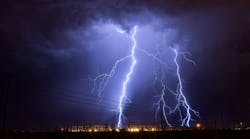We have a number of recognized transmission and distribution experts serving on our board of "Grid Masters." Several times each month we’ll post what we judge to be the toughest questions that also have high interest to our readers. At least one of our experts will respond. Want to challenge our Grid Masters for a chance to win?
Q: With land-use and permitting issues becoming more complex and expensive, cable might be close to being price-competitive with overhead transmission. That would particularly apply in highly populated areas where right of way is a premium (as is visual impact). Do you see that happening in the U.S.? Europe? Doesn't the recent storm damage make cable more attractive financially?
-Anon (USA) – CJm
A; Underground cables for medium voltage distribution are becoming a preferred choice for new construction/neighborhoods/commercial installations in the US. For older neighborhoods the overhead lines are still there because the cost of switching to underground is too high.
Advantages of the underground cables for distribution of power are several: higher reliability (especially in storms, ice, snow, wind, etc.), esthetics (visibility of overhead line and especially utility poles with all the equipment is not what people want to see these days), and others. However, underground cables are also prone to damage due to accidental digging, like the gas lines or water lines are. Large cities like New York or Boston have underground cables for distributing power at both medium and low voltage. In fact most of the New York City substations have also high voltage (transmission) underground rather than overhead.
In Europe cable distribution is very popular. Almost all cities (large and small) have underground cables only with some exceptions. The reasons are historical: European utilities were mainly state owned. Also the space in European countries is more of a premium and that helped offset the differential cost of cable versus overhead.
-Dr. Mietek Glinkowski, P.E.
Global Head of Technology
ABB Inc.
See previous questions and answers and join the discussion. Add your comments below:


